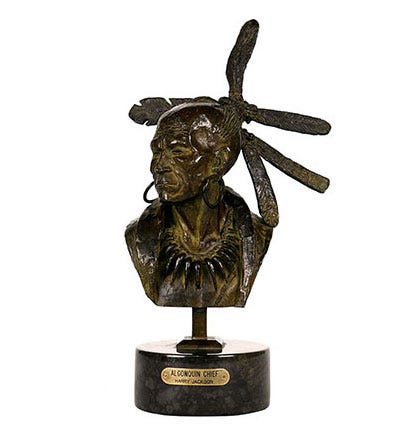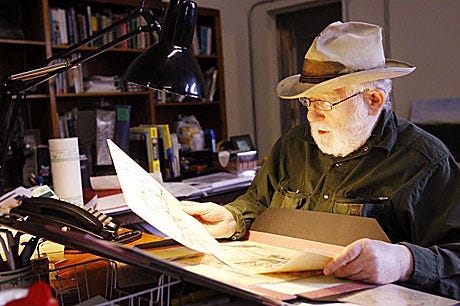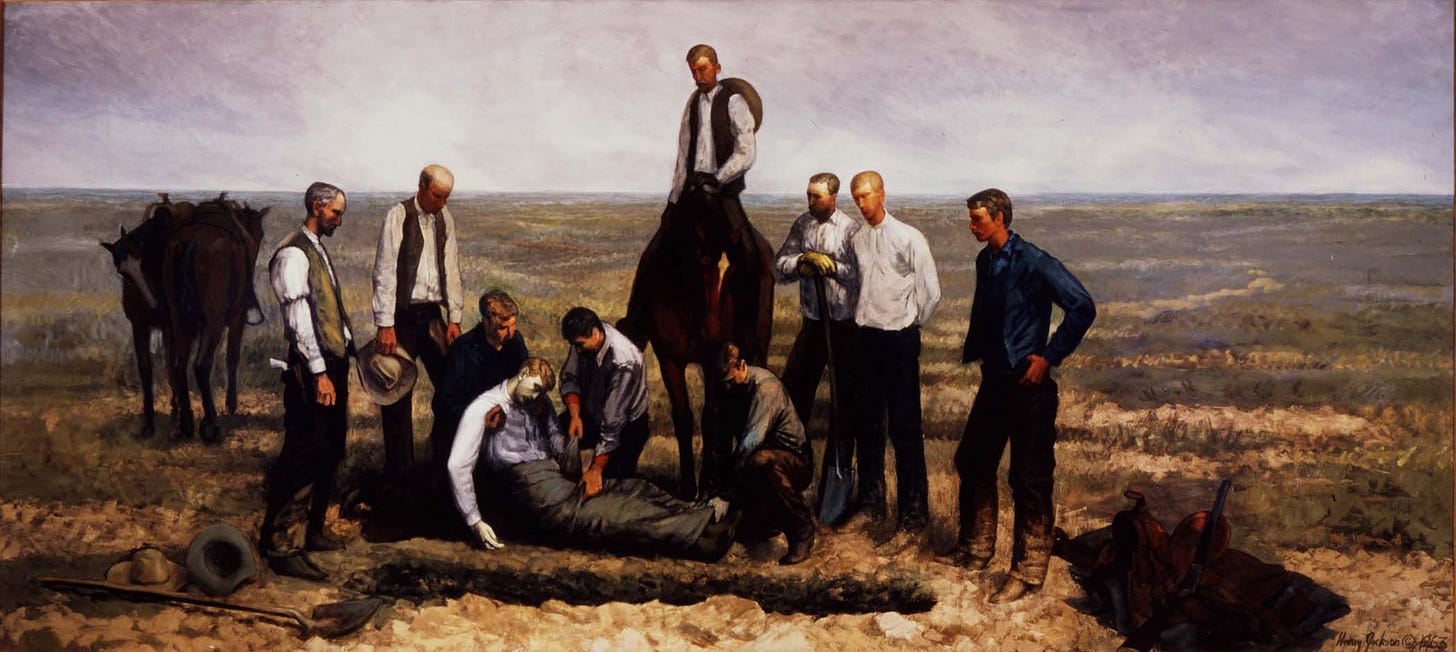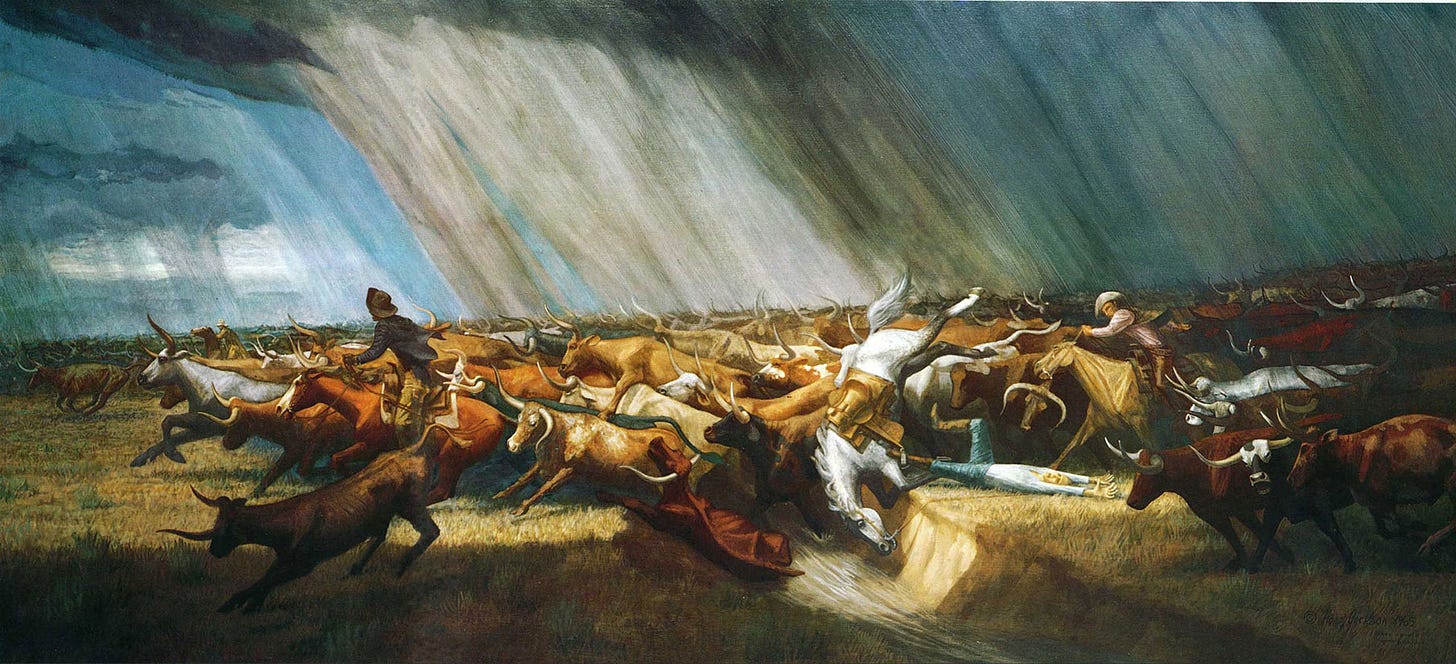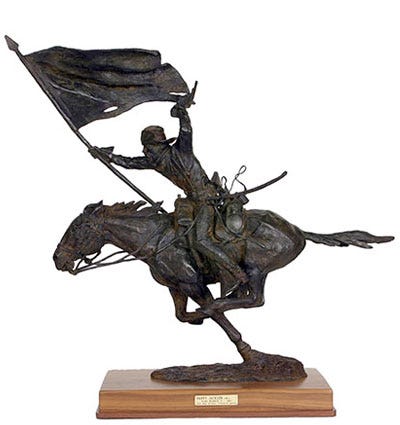Legacy of Harry Jackson
The Preeminent Sculptor & Painter of the Wild West
By Jordan Schaul | National Geographic | September 23, 2013
Harry Jackson was born and raised in an era when people didn’t have the luxury to spend time emotionalizing. Instead, they just “sucked it up” for lack of a more congenial phrase.
There was no such thing as being entitled. People just lived hard with strong determination, and some of them lived with great ambition.
There was little room or time for excessive contemplation about anything, at least that is my take on a generation of Americans who grew up during the Great Depression, and that is my impression of Harry Jackson.
Harry was no different; if anything he was just more ambitious and challenged his very humble beginnings by becoming one of the most distinguished American sculptors and painters in history.
At the very least, Harry Jackson was the preeminent Western artist of his time. There may never be another artist like him.
For Jackson, who left his home in Chicago, Illinois at age 14 with aspirations to become a Cowboy, there was no looking back.
To me, the achievement of becoming a cowboy, when born in urban Chicago in the 1920s is deserving of much recognition and admiration in itself.
But Jackson not only became a cowboy, the dream of so many young boys and girls, but he also served his country as a combat artist in the Marine Corps. Harry eventually returned to Cody, Wyoming where he had initially settled to pursue life as an artist and cowboy.
I suspect that if John Wayne narrates a documentary about your life, you must know something about the Wild West. And that Harry did—and he graciously shared it with the world.
Although the Whitney Gallery of Western Art at the Buffalo Bill Historical Center in Cody holds the largest museum collection of Harry Jackson’s art, his collections are also exhibited at The Metropolitan Museum of Art in New York City, the Smithsonian American Art Museum in Washington D.C., and the Denver Art Museum in Denver, Colorado, among other prestigious institutions. His paintings and sculptures are also owned by the Saudi Arabian royal family, Queen Elizabeth II, the Italian government and the Vatican.
A student of Jackson Pollock for a period of time, the feisty, strong-headed and confident ex-marine, chose to separate from Pollock and his distinguished group of prodigies and colleagues, and endeavored to take his own course, in his own way, and definitely on his own terms.
In a rare interview conducted at the Hunter Gallery in San Francisco in December of 1980, Jackson discussed his craft.
With his quick, dry wit, and confidence, the artist made the following statement during the 1980 interview, which I thought was profoundly poignant:
“CRAFTSMANSHIP IS TERRIBLY KNOWABLE, ONE SHOULD BE ABLE TO DO THAT IN THE DARK BACKWARDS, BUT SPIRIT, THAT SORT OF THING, YOU CAN NEVER KNOW ABOUT THAT.”
Recently, I had a chance to correspond with one of Jackson’s five children. Matt Jackson manages the Jackson collection in Cody, Wyoming, and serves as the President of Harry Jackson Studios. He graciously agreed to participate in the following interview about his father’s legacy.
Interview:
Jordan: Sadly, I did not get a chance to meet your father, and my condolences to you on his passing in 2011 at age 87. I’m most familiar with his work, but I don’t know that I was very familiar with Harry the artist. Your father has pieces that were commissioned here in Los Angeles, California by different entities. Can you tell us about some of them?
Matt: “The Horseman” is a 21’ sculpture of John Wayne horseback riding on top of a base that depicts the rough life of the cowboy on the open plains at the turn of the century. That was commissioned by Great Western Finance Corporation— a company, which John Wayne was a spokesperson when he passed away.
Great Western Finance Corporation asked the Wayne family who they would recommend creating a monumental sculpture of John Wayne for their headquarters building in Beverly Hills. The Wayne family said the only artist would be Harry Jackson.
Jordan: Did my brief introduction capture the persona of your father? Can you tell us more about him? He seemed like a very spirited guy. Artists are often quirky in an endearing sort of way, but Harry seemed, from interviews, to be very much like a former marine and with a great sense of humor.
Matt: Well, after the war he was dissatisfied with the paintings of the war that he was doing. They just didn’t convey what he was feeling at the time and what the experience of war was for the American people. He saw some images of Jackson Pollock’s paintings in a magazine in 1946-47 and those were closer to what he was feeling than what he saw in his own works.
So he moved to NY in 1947 with the intent of meeting Pollock. He eventually drove out to Springs, Long Island where Jackson Pollock lived, and knocked on his door. When Pollock came to the door Harry said “You and I have something in common. You were born in Cody and I live in Cody.” Pollock loved him right from the start and according to my Dad, they talked all night about the history of art and where it was going. The first painting Harry painted after meeting Pollock was “The White Figure” in 1948.
This painting represented what it felt like to be in battle—the absolute psychotic unreality of it all. The war was with him till the day he died and “SALVATUR MUNDI CRUCIFIED IN BETIO AMNION,” referring to his first assault at Tarawa Atoll, which he painted in 2002.
During the amphibious assault at Tarawa, Harry was hit in the head and developed a traumatic brain injury. He was blind for a day and a half before he was well enough to go back and finish with the end of the operation.
His injury led to grand mal epilepsy, lack of impulse control, and many other issues. The injury sustained in battle changed his life and he struggled with Post Traumatic Stress Disorder (PTSD) until his dying days.
You referred to him as a student of Pollock’s. He was actually a contemporary of Pollock’s and painted alongside many of the greats of the “New York School” or the Abstract Expressionists. He was a student of Hans Hoffman who was also an abstract expressionist.
Jordan: How would you like your father to be remembered. Can you talk about the legacy he leaves behind?
Matt: Well, his legacy is something that will take many years to write. For me being his son means that I’m too close to him to speak about the public legacy he leaves behind with his incredible art and the lives he touched. He was a man who could be the most charming when he wanted to be and the most impossible and tortured soul.
This summer we had a meeting with many of the Wyoming Art museums here at his studio in Cody, WY. They signed the statement below that clearly shows that he did leave a lasting impact with his art: “We the undersigned, unanimously agree that Harry Jackson’s work represents a rich and important artistic and cultural legacy to the State of Wyoming and to the history of art and that, as a Wyoming artist of international stature whose work is unique in its breadth and range, his collected works must be kept together in Wyoming.”
Jordan: I’m fascinated that he was a cowboy. Did you guys grow up riding horses and corralling cattle? Can you tell me about life with your Dad in Wyoming?
Matt: Well, growing up he was more about his art than about being a cowboy by the time kids came along. But all of us kids learned to ride a horse and spent a bit of time in the saddle. He had many friends who were cowboys and cattle ranchers and I went to more than one branding, helping to gather up cattle and getting down and dirty in the corral.
He did buy a large ranch in the late Seventies I believe. And I think he felt the pain of ranching by buying high and ended up selling the operation when the prices were low.
Jordan: Are there pieces in his collections that are favorites of yours?
Matt: One of my favorites is an early bucking horse sculpture that he did called “Sittin’ Purty.”
There was also an incredible series of accidental works that he did in 1949 while in San Miguel de Allende. They are lyrical and filled with bright bursts of color.
The work that is the favorite of everyone who visits the studio in Cody is “The Italian Bar” painted in 1956. It is a beautiful 7 x 9-foot painting of a Little Italy café, which today is called “The Mulberry street bar.”
Jordan: Can you tell us about the status of his collections today?
Matt: The most recognized artworks are his western sculptures. But he leaves behind a far richer legacy that ranges from WWII to abstraction to realism. He blazed a trail that many followed and this is increasingly being recognized throughout the art world. The estate is promoting and selling his works of art. There is information about what is happening with the collection, exhibit events, etc. on our website dedicated to Harry Jackson Studios.
Videos of the late Harry Jackson and his work
ABOUT NATIONAL GEOGRAPHIC SOCIETY
The National Geographic Society is a global nonprofit organization that uses the power of science, exploration, education and storytelling to illuminate and protect the wonder of our world. Since 1888, National Geographic has pushed the boundaries of exploration, investing in bold people and transformative ideas, providing more than 14,000 grants for work across all seven continents, reaching 3 million students each year through education offerings, and engaging audiences around the globe through signature experiences, stories and content. To learn more, visit www.nationalgeographic.org or follow us on Instagram, Twitter and Facebook.
MEET THE AUTHOR
Jordan Carlton SchaulWith training in wildlife ecology, conservation medicine, and comparative psychology, Dr. Schaul's contributions to Nat Geo Voices have covered a range of environmental and social topics. He draws particular attention to the plight of imperiled species highlighting issues at the juncture or nexus of sorta situ wildlife conservation and applied animal welfare. Sorta situ conservation practices are comprised of scientific management and stewardship of animal populations ex-situ (in captivity / 'in human care') and in-situ (free-ranging / 'in nature'). He also has a background in behavior management and training of companion animals and captive wildlife and conservation marketing and digital publicity. Jordan has shared interviews with colleagues and public figures, as well as editorial news content. In addition, he has posted narratives describing his own work, which include the following examples: • Restoration of wood bison to the Interior of Alaska while (While Animal Curator at Alaska Wildlife Conservation Center and courtesy professor at the University of Alaska) • Rehabilitation of orphaned sloth bears exploited for tourists in South Asia (While executive consultant 'in-residence' at the Agra Bear Rescue Center managed by Wildlife SOS) • Censusing small wild cat (e.g. ocelot and margay) populations in the montane cloud forests of Costa Rica for popular publications with 'The Cat Whisperer' Mieshelle Nagelschneider • Evaluating the impact of ecotourism on marine mammal population stability and welfare off the coast of Mexico's Sea of Cortez (With Boston University's marine science program) Jordan was a director on boards of non-profit wildlife conservation organizations serving nations in Africa, North and South America and Southeast Asia. He is also a consultant to a human-wildlife conflict mitigation organization in the Pacific Northwest. Following animal curatorships in Alaska and California, he served as a charter board member of a zoo advocacy and outreach organization and later as its executive director. Jordan was a member of the Communication and Education Commission of the International Union for the Conservation of Nature (CEC-IUCN) and the Bear Specialist Group of the IUCN Species Survival Commission (BSG-SSC-IUCN). He has served on the advisory council of the National Wildlife Humane Society and in service to the Bear Taxon Advisory Group of the Association of Zoos and Aquariums (AZA Bear TAG). In addition, he was an ex officio member of the council of the International Association for Bear Research and Management.



